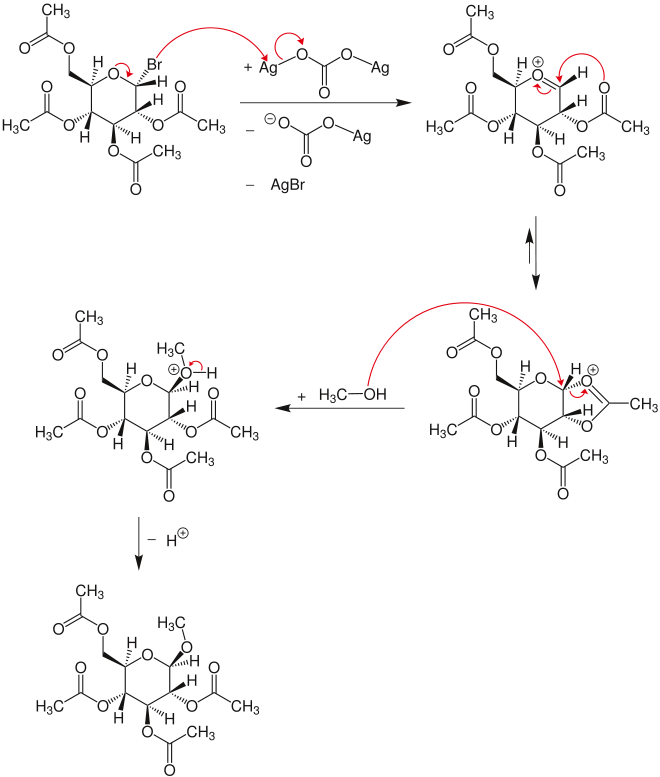Koenigs-Knorr method
The Koenigs-Knorr reaction - named after Wilhelm Koenigs (1851-1906) and his colleague Eduard Knorr (1867-1926) - is one of the most well-known reactions in carbohydrate chemistry and is used for synthesizing glycosides from monosaccharide - derivatives .
In 1901 the chemists Koenigs and Knorr treated 2,3,4,6- tetra- O- acetyl-α-D-glucopyranosyl bromide (acetobromoglucose) in methanol with silver (I) carbonate and obtained methyl-2,3,4, 6-tetra- O- acetyl-β-D-glucopyranoside.
Reaction mechanism
In the first step, the glycosyl bromide reacts with silver carbonate , splitting off silver bromide and the silver carbonate anion to form the oxocarbenium ion. A dioxolanium ion is formed from this, which is attacked by methanol via an S N 2 mechanism on the carbonyl carbon atom. This attack causes inversion . After a proton has been split off, the glycoside is ultimately formed .
This reaction can also carbohydrates with other protective groups are transmitted. In the oligosaccharide synthesis, instead of methanol, carbohydrates are used that have been modified with protective groups so that they only contain one “free” hydroxyl group .
The method was later transferred to other chlorine-substituted purines by Emil Fischer and Burckhardt Helferich and thus nucleosides were synthesized for the first time . It was later improved and modified by numerous chemists.
Individual evidence
- ↑ László Kürti and Barbara Czakó: Strategic Applications of Named Reactions in Organic Synthesis: Background and Detailed Mechanisms , Elsevier Academic Press, 2005, pp. 246–247, ISBN 978-0-12-429785-2 .
literature
- W. Koenigs, E. Knorr: Chemical reports . No. 34 , 1901, pp. 957 . on-line

